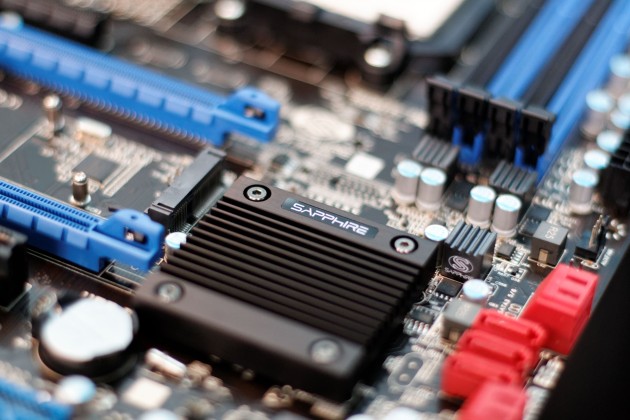
When enthusiasts begin deciding on motherboards for their new builds, SAPPHIRE might not be a name that immediately crosses their minds. They’re not entirely new to the motherboard scene, but they are definitely more well-known as a premiere partner for AMD Radeon GPUs rather than a mainboard company. In the GPU world, SAPPHIRE tends to differentiate from other Radeon vendors by offering unique features such as advanced heatsink designs, flexible output options, and extra pack-ins, and because of this they are considered one of the more upscale GPU vendors. In the world of motherboards, however, they have considerably more competition that is well known for their high-end product offerings. If SAPPHIRE brings the same level of quality and extra features and perks to their motherboards that they do to their GPUs, then it would be a win for enthusiasts.
Today we’re looking at their newest motherboard, their flagship Socket FM2 offering based on the AMD A85X chipset, the Pure Platinum A85XT motherboard.
Reviewing a first generation motherboard on a brand new chipset with a brand new CPU is tricky because there’s not really any body of data to compare things to. It’s hard to draw conclusions based on testing of three new parts. This is SAPPHIRE’s first A85X motherboard. The A85X chipset is brand new, and the A10-5800K is part of AMD’s first generation of APUs on this new socket (FM2).
That said, the roster of enthusiast-class motherboards for this APU is light. We have enthusiast class boards from Gigabyte, ASUS, MSI, and ECS. Our initial review of the A10-5800K APU was performed with a Gigabyte GA-F2A85X-UP4, so we at least have that one to compare to.
Board overview and specifications
- CPU Support: AMD A-series APU with AMD Radeon™ HD Graphics and AMD Athlon X4 700 series NPU
- Chipset: AMD™ A85XT (Hudson-D4 FCH)
- BIOS: AMI BIOS, 32Mb Flash ROM
- Memory: 4 slots 240-pin DDR3 800/1066/1333/1600+ non-ECC, unbuffered memory
- Expansion Slots; 1 x MINI PCI-E x1 slots, 2 x 32-bit PCI slots, 2 x PCI Express x1 slots, 1 x PCI Express x4 slots, 1 x PCI Express 2.0 x16 / x8 slots
- Storage: Supports HDDs with RAID 0, 1,5,10 functions
- SATA ports: 7 x SATA 3.0 6Gb/s connectors with AHCI support and 1 x Support mSATA by mini PCIE slot
- Audio: Realtek ALC892 HD Audio CODEC with 8-Channel
- Ethernet LAN: Realtek RTL8111F PCI Express Gigabit LAN
- Rear Panel IO: 4 x USB 2.0 port, 2 x USB 3.0 port, 1 x Dual-Link DVI port, 1 x HDMI port, 1 x Supporting Bluetooth® 2.1 + EDR by Atheros AR3011, PS/2 KB/MS combo port, 1 x VGA (DB-15), RJ- 45 Gigabit LAN with ESD, DisplayPort1.2
- Internal IO: 2 x USB 2.0 headers, 4 pins CPU PWM Fan connectors, 3 Pin Chassis Fan connectors, 24-pin ATX Power connector, 8-pin ATX 12V Power connector, 1 x COM headers
- Control (Front) panel headers: 1 x USB 3.0 headers, Audio I/O (Front) header, Power Button, Reset Button
- Internal controls: CMOS clear Button, Dual BIOS select switch with indicator LED
- Form Factor: ATX, Size 12″ x 9.6″
Just comparing it to the only other A85X board we have on the bench, the standout features are definitely the built-in Bluetooth support, the Mini PCI-E slot, and the curious addition of a second PCI slot. Having a manual switch for the Dual BIOS feature is something that can be curiously satisfying or annoying, depending on your personality. I prefer having the manual switch because I feel more secure that it’s going to work if things go south. However, in looking at the online version of the user manual, the dual BIOS switch is mostly for running two separate BIOS settings that you can switch back-and-forth between manually; if the primary BIOS is corrupt, the board will automatically switch to the secondary, regardless of what position the switch is in.
Because of Trinity’s Southern Islands GPU, you will be able to drive up to three concurrent displays from this motherboard without any discrete GPU installed.
In the package, we also have a very nice 3.5″ black brushed steel USB 3.0 breakout panel, and if you prefer those two extra USB 3 ports to be in the rear, the panel is interchangeable with a rear-panel slot bezel. The board also comes with six black SATA cables.
AMD A85X Chipset
The A85X chipset is AMD’s enthusiast-class chipset for Trinity. One of the biggest standout features is the support for eight native 6gb SATA ports at the silicon level. This is one of the key differentiators between AMD and Intel at this level, as the Intel Z77 chipset only supports two SATA 6gb ports simultaneously (and four SATA 2 3gb ports). The A85X chipset also supports RAID-5, which might be of importance to those looking to build low-power NAS units.
Trinity provides twenty PCIe 2.0 lanes from the APU, which means Socket FM2 boards have the capability of doing x16/x4 or x8/x8/x4 at full bandwidth.
A85X lacks PCIe 3.0 functionality, despite the fact that the latest round of AMD GPUs has had PCIe 3.0 support for some time, but in all but the most extreme scenarios, this has no bearing on performance.
Board layout
The SAPPHIRE Pure Platinum A85XT motherboard is standard ATX, and has, in signature SAPPHIRE fashion, a standout VRM heatsink. The chokes are SAPPHIRE’s “Diamond Black”, and based on a visual inspection (and I’m no EE, but…) the PWM appears to be four-phase, with another two phases for VDIMM regulation. SAPPHIRE just says “Multi-phase” in their press materials. One of the best features of the VRM heatsink is that the fins line up vertically when the board is mounted upright, in line with a top-mounted fan, which means airflow from a fan on top of the case will go through the fins, increasing cooling efficiency—which bodes well for overclocking. The Gigabyte board we have for comparison actually has horizontally-aligned fins which puts the airflow going over the top and creating chop (I’m also no fluid dynamics expert, but…)
The port layout is done well, and if you’re putting this into a case with decent cable management capability, you should have no problems. It seems as if board manufacturers have finally settled on a few relatively standard places to put the EATX main power connector, and everything else is in a place that makes sense as well. The board features a two-character digital debug display as well as on-board power, CMOS clear, and reset buttons for those who have their boards exposed during overclocking adventures. While the digital readout is a very nice feature and can help solve maddening issues with builds, they inexplicably left the code information out of the manual. You have to go online to get the PDF version of the manual from SAPPHIRE’s website in order to translate the debug codes. If this is your only PC and you have a malfunction code, it’s not going to be easy to get that PDF. They should have put the codes in the manual that was supplied with the board. It’s a minor nitpick, I know.
On the back panel, we have two USB 3.0 ports, four USB 2.0 ports, a combo PS/2 port, a Bluetooth dongle, optical audio, gigabit LAN, audio jacks, and the standout feature of Trinity boards, HDMI, DisplayPort, DVI, and VGA.
The only thing I would have liked to see is four USB 3.0 ports instead of two. The Gigabyte competitor, for example, has four USB 3.0 ports and only two USB 2.0 ports. I realize there aren’t a ton of USB 3.0 peripherals out there yet (other than storage), but looking forward is always appreciated. I also long for the day that motherboards have more than one single USB 3.0 internal header as well.
The northbridge heatsink is passive, low, and sleek. The case header pin block is small, color-coded, and easy to figure out, even without using a manual. The only complaint I have about port location is the front panel audio header is in a weird spot that could be annoying if you have dual GPUs installed. There are only two internal USB 2.0 headers, which for people like me that have a ton of USB peripherals, could be an issue. One extra header would have been nice. Regardless, the USB ports all support USB charging when the PC is off.
Aesthetically, the board is almost all black with the exception of the red SATA ports and blue slots, and looks really slick. I’ve always been a fan of the slightly less-flashy SAPPHIRE aesthetic.
BIOS and software
The SAPPHIRE Pure Platinum A85XT uses a UEFI BIOS, which means full graphical and mouse support.
I’ll make a bold statement: This BIOS, dubbed SAPPHIRE QBIOS, is the most intuitive and clean I’ve ever used. The hardware readouts are extremely helpful, the mouse navigation is a nice bonus, and everything is labelled clearly and intuitively.
The absolute best feature of the BIOS is the live hardware monitoring at the bottom, though. As you make changes to the CPU, voltage, and clock settings, they update in real time. You get live temp, voltage, and performance readings as you tweak settings. This is indescribably helpful when overclocking.
If you prefer to do this in Windows, SAPPHIRE also provides two helpful pieces of software: their TRIXX motherboard monitoring and tweaking application and a Windows desktop widget hardware monitor.
The widget can stay on top, as any Windows gadget can do, and gives you constant and accurate voltage, RPM, and temperature readings.
Of course, the BIOS will always give you the most control and flexibility when overclocking, as you can tweak very detailed settings. For the most part, only very basic overclocking and monitoring is available from TRIXX. You can’t, for example, adjust the multiplier (at least I couldn’t find a way to, even after reading the manual), only the frequency. Anything but the most basic overclocking is going to be done either in the BIOS or, since this is AMD, with the AMD OverDrive utility.
There is, of course, a driver DVD that comes with the board as well, though as always the better bet is to get the latest versions from AMD and SAPPHIRE’s websites, respectively.
Performance
All benchmarks and tests were run with 4gb of OCZ DDR3-1066, the AMD A10-5800K APU, a SAPPHIRE Radeon HD 7870 GPU, and an OCZ Vertex 3 SSD.
First we’ll be looking at audio latency with DPC latency checker. DPC is “Deferred Procedure Call” and can be used to identify weird spikes of lag during sustained activity. One scenario in which DPC latency is extremely obvious and a huge problem is for those who are recording digital audio, specifically in DAW (dedicated audio workstation) PCs. DPC latency can cause audio pauses, stuttering, and other issues. Motherboards actually have a rather profound effect on DPC latency, and we’ll be including DPC latency as tested by Thesycon’s DPC latency check tool in all future Icrontic motherboard reviews. DPC latency is measured in microseconds; under 500 microseconds is generally considered acceptable, while under 200 is ideal.
This board averaged 140 while it peaked out at 189. The test was conducted while playing back 1080p video in Windows Media Player, and cycling through a series of maximize/minimize window operations for a full minute.
I was going to use OCCT to test voltages, but I have get the distinct feeling that the current version of OCCT doesn’t play correctly with this board. After some erratic results, I ran OCCT side-by-side with the SAPPHIRE voltage widget, and decided to trust the manufacturer’s monitoring software. For now, OCCT will not be included in these results because of the inconsistencies:
The only voltage reading that was consistent was the 3.3v rail, for some reason. Temperature readings were also wrong.
AIDA64, on the other hand, gets the temperature correct, but gives the same voltage readings as OCCT with this motherboard. Perhaps updates to both software products will allow them to work with this motherboard. C’est la vie, this is a bleeding-edge new platform, so this is expected.
The VRU and system temps look really good under OCCT testing, however (which is great for testing load using the Linpack test). At 100% load for 3 minutes, the VRU peaked at 32c and the system temp never got above 29c. On a side note, showing the impressive nature of the Trinity A10, the APU never got above 39C. Man, does this chip run cool.
Overclocking
Now that we know the board runs cool under load and appears to have a solid power circuit, let’s get to the meat of the matter and see what we can get out of the A10-5800K. Stock clocks on the A10 are 3.8ghz-4.2ghz with the correct thermal headroom, and since we have good cooling (a Thermaltake Water2.0 Performer) and a very good case (NZXT Switch 810SE), we have all the headroom we need to max out the stock clocks. As you can see from the screenshots that were posted, our A10-5800K is running at 4.2ghz.
Our first basic overclock was up to 4.4ghz, by tweaking the bus clock to 110mhz at 42X multiplier. After three minutes of Linpack, our temp peaked at 41C. Not bad, but Trinity can do better.
Using the SAPPHIRE TRIXX tool, strangely, only allows you to tweak the bus. Any change at all to the multiplier in the BIOS prevented Windows from starting. After disabling Line Leveling, CPB (Core Power Boost), and Cool’n’Quiet, BIOS overclocking became a reality—but only at 100mhz bus clock.
Starting from scratch, BIOS overclocking went very poorly. Anything higher than 42x multiplier resulted in SAPPHIRE “Watchdog” kicking in; the PC would shut down hard, pause for a second, then come back up with a warning that Watchdog prevented the system from booting. Your only option at that point is to go into QBIOS and change things; clocking down to 41x or 40x resulted in the ability to boot.
Even more oddly, BIOS overclocks (even 4200mhz, which is actually a stock clock for this APU), resulted in Windows being wonky and unstable.
Finally, AMD OverDrive was used; BIOS was reset to stock, and voltages were raised to 1.4v. From here, we achieved 4500mhz stable (Linpack through OCCT for 30 minutes). Peak APU temperature at 4500mhz (as measured visually with the SAPPHIRE temp gadget during the Linpack test) was 45c.
4500 isn’t a remarkable overclock by any means. It concerns me that no overclocking was achievable through the BIOS, regardless of settings matching the OverDrive settings exactly. Even if 45x 100mhz, 1.4v APU, 1.2v NB was stable, the BIOS WatchDog simply would not allow the system to boot. OverDrive overclocking is fine, but it’s something you have to do manually and it’s annoying. It would be nice if we could have gotten the BIOS to respect the 4500mhz overclock, hold that setting, boot, and work from there.
SAPPHIRE TRIXX is a great monitoring tool, but only allowing bus overclocking is nearly useless, as anything over a 10mhz overclock to the bus resulted in instability. Sure, we got 4400mhz out of it, but Trinity can do so much more. Given time and inclination, one could very likely figure out the BIOS overclocking and get up to 5ghz on air with this APU.
Conclusion
 At $139 MSRP, this is at the top of the heap for Socket FM2 motherboads, putting it firmly into the realm of “enthusiast”, which is odd considering that Trinity is not necessarily considered an enthusiast part. What Trinity is, is an interesting part. I suppose it technically would be exciting for some enthusiasts in the way that the old Celeron 300 was back in the day: it’s a sleeper. It’s like tricking out a 1989 Dodge Spirit. It would be fun to crank this thing up to performances way beyond what it was meant for, and for that purpose, the SAPPHIRE Pure Platinum A85XT looks like it will be a solid choice for those kind of adventures.
At $139 MSRP, this is at the top of the heap for Socket FM2 motherboads, putting it firmly into the realm of “enthusiast”, which is odd considering that Trinity is not necessarily considered an enthusiast part. What Trinity is, is an interesting part. I suppose it technically would be exciting for some enthusiasts in the way that the old Celeron 300 was back in the day: it’s a sleeper. It’s like tricking out a 1989 Dodge Spirit. It would be fun to crank this thing up to performances way beyond what it was meant for, and for that purpose, the SAPPHIRE Pure Platinum A85XT looks like it will be a solid choice for those kind of adventures.
Right now, given that I have two of the four top-tier FM2 motherboards on my desk, I lean towards the SAPPHIRE A85XT as the best of the two, primarily for the Mini-PCIe slot and the really good QBIOS. The VRM cooling is also more effective, which is a hallmark of SAPPHIRE products. Put another way: if you’re investing in the A8-5600K or A10-5800K Trinity APU, this is probably the best board out there to get the most out of Trinity.
We’re happy to award the SAPPHIRE Pure Platinum A85XT our Silver Outstanding Product award for being, so far, the best in its (admittedly small) class. SAPPHIRE is not a name that is traditionally associated with motherboards, but the build quality, features, and pack-ins included with this board have convinced at least this reviewer that they are definitely one to watch for future enthusiast boards.
The SAPPHIRE Pure Platinum A85XT motherboard will be available soon from Newegg and other e-tailers, and should go for $139.99.



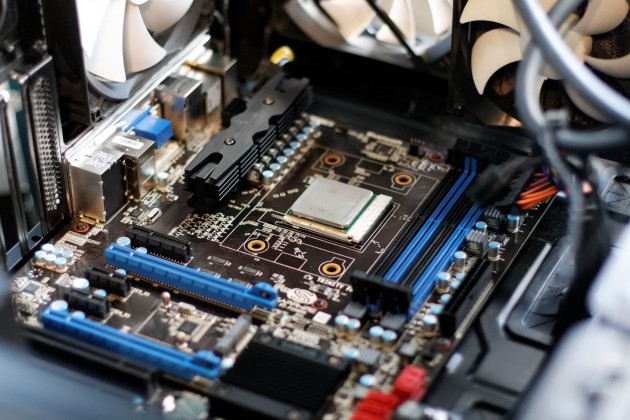
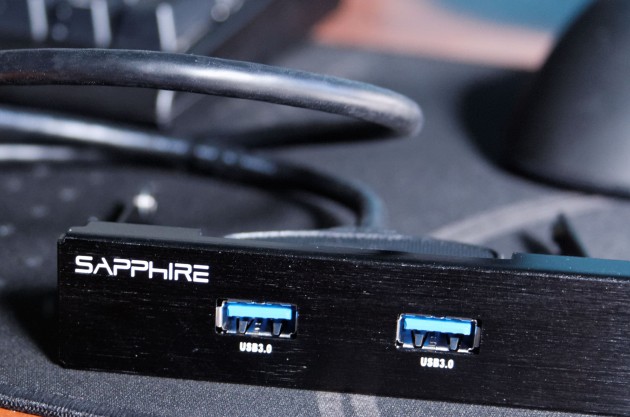
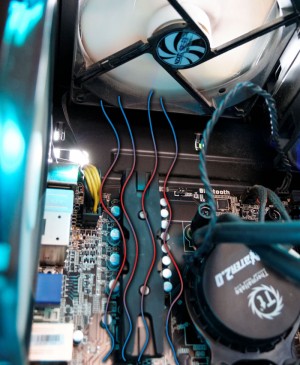

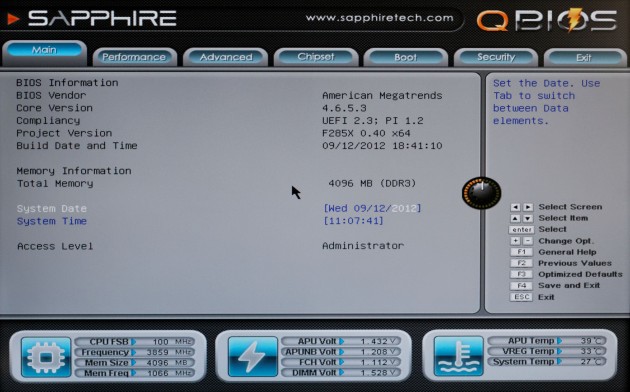
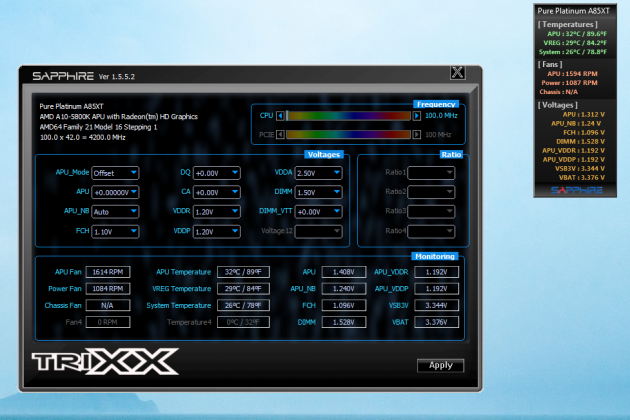
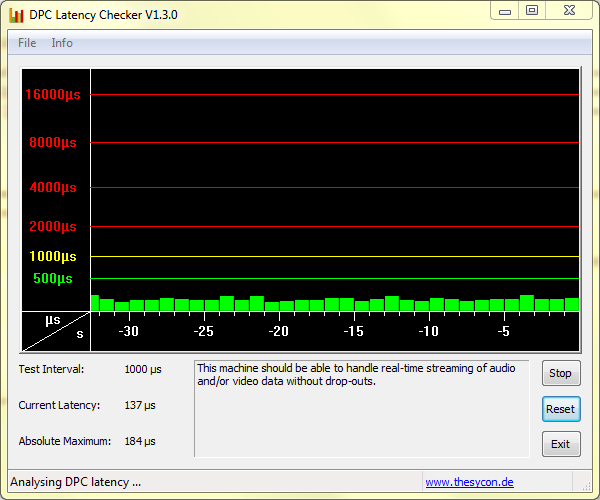
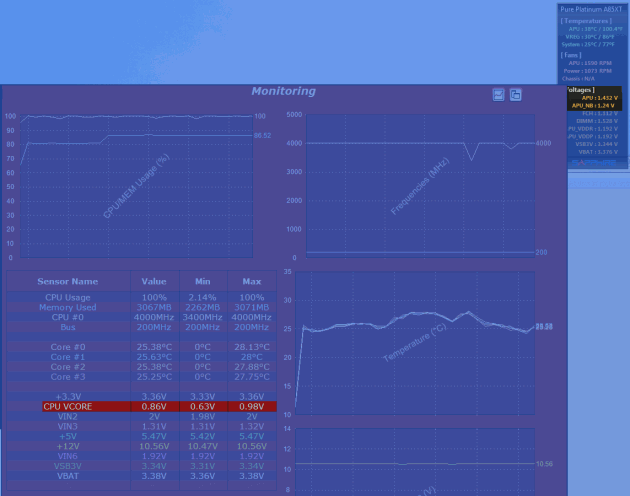









 Articles RSS
Articles RSS